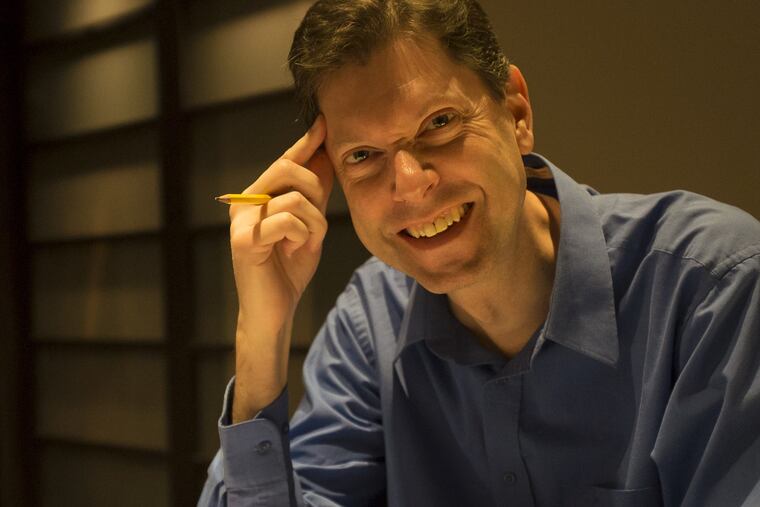Art Museum’s Hopper painting inspires new Pierre Jalbert score
The new work was given its world premiere Sunday in a gallery at the Art Museum.

As entry points go, there's nothing particularly wrong with using a piece of visual art to spur the creation of a new musical work — as long as you, the listener, don't take things too literally.
Pierre Jalbert had the right idea. On Sunday afternoon in a gallery at the Philadelphia Museum of Art, players from the Network for New Music unveiled his Light, Line, Shadow. The 15-minute piece, for seven players and led by Jan Krzywicki, had the benefit of having its prompt, Edward Hopper's Road and Trees, hanging right there. Pictures at an Exhibition isn't the enduring success it is because of what it tells you about the pictures that inspired it, and Jalbert's piece works independently from the Hopper because it is, in itself, a small gem.
If you had shown up early Sunday (as I did), you might have questioned the entire premise of an objective one-to-one relationship between art and music. The Hopper is part of a current Art Museum exhibition, "Modern Times: American Art 1910-1950," and the Jalbert, being rehearsed by the Network ensemble as I entered, happened to coincide with my arrival at The White Way, the magnificent John Sloan cityscape that opens the show. The juxtaposition magnified the meaning of both.
>> READ MORE: Art Museum show gives American Modernists – and Philly ones – new respect
The rehearsal sounds carried through the galleries, and a few minutes later, as Jalbert's mysterious opening was getting a run-through, it brought mood and meaning to the blue-gray angular architecture of Charles Sheeler's Neighbors.
But if humans are highly suggestible to making connections, Jalbert's connotations were hardly random. His work strikes a smart balance: Specific references are there to be found, but he does nothing to shackle the listener's imagination. I didn't stay for the post-performance talk and avoided reading the program notes, and yet his piece spoke quite well for itself.
One of the reasons Jalbert and Hopper go together so nicely is that this late (1962) work by the American artist is so oddly modern; it is a long way from the 1942 oil Nighthawks, the sleek eavesdrop on a nighttime diner that has become a great American meme.
Jalbert's language is modern, too, but highly genial.
The Houston-based composer — perhaps familiar to some for his time years ago as a University of Pennsylvania doctoral student — organized his work in three movements. Hopper aimed to capture something of a moving car passing the landscape, and Jalbert plays beautifully with this idea — motion, motion blurred, motion suspended, motion resumed. The opening movement floats and then rushes forth; the second movement is haunted by cello harmonics, here played eerily by John Koen.
Jalbert weaves together a lot of ideas in the third movement — a Stravinsky clarinet lick played here by Bob Butryn, Edward Schultz's unusually quiet piccolo solo that whispered into your ear like a worried friend. Hopper's canvas is subdued and melancholy, at least in the relatively dim light of the Dorrance gallery. The music wallows for a while, the way the grim second movement of Ravel's Gaspard de la nuit does.
This last movement of Light, Line, Shadow, called "Open Road," is serious and crushingly beautiful, and it pierces beneath the surface of the painting. It sums up a journey, but sends you on your way with something — a mood, the intimation perhaps of something lurking beyond those trees — that you didn't have on your way there.
"Modern Times: American Art 1910-1950" continues at the Philadelphia Museum of Art through Sept. 2. www.philamuseum.org.
Light, Line, Shadow will be repeated Oct. 14 by Network for New Music. www.networkfornewmusic.org.